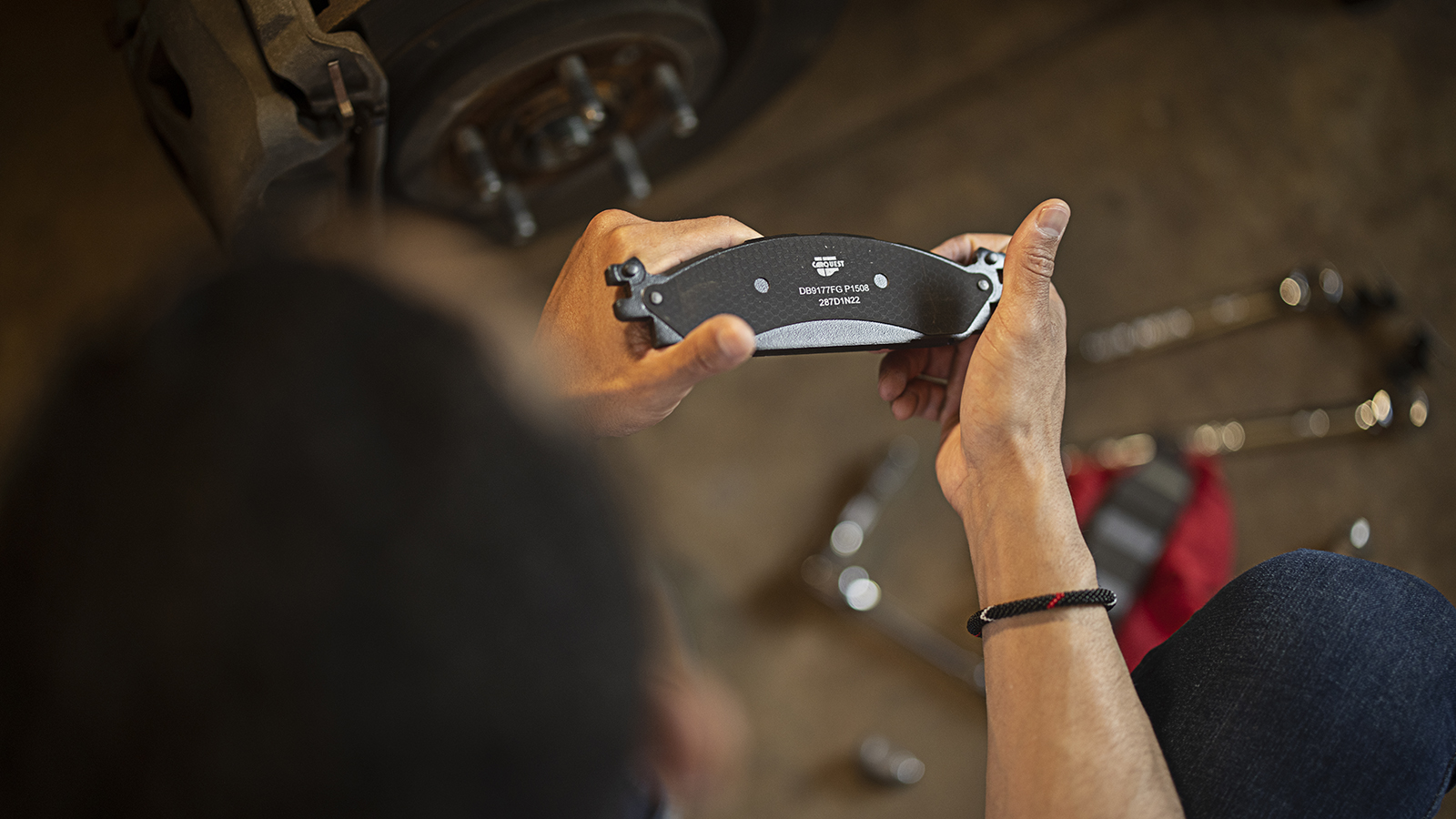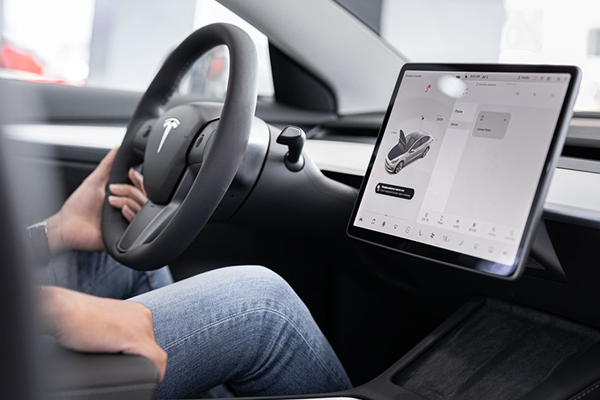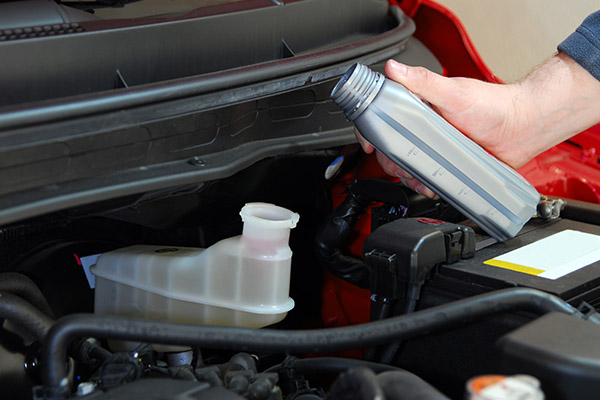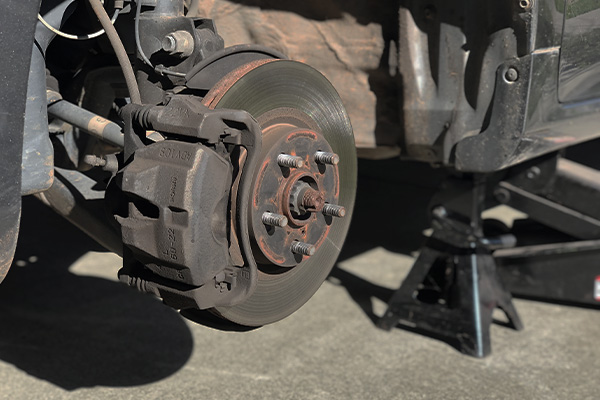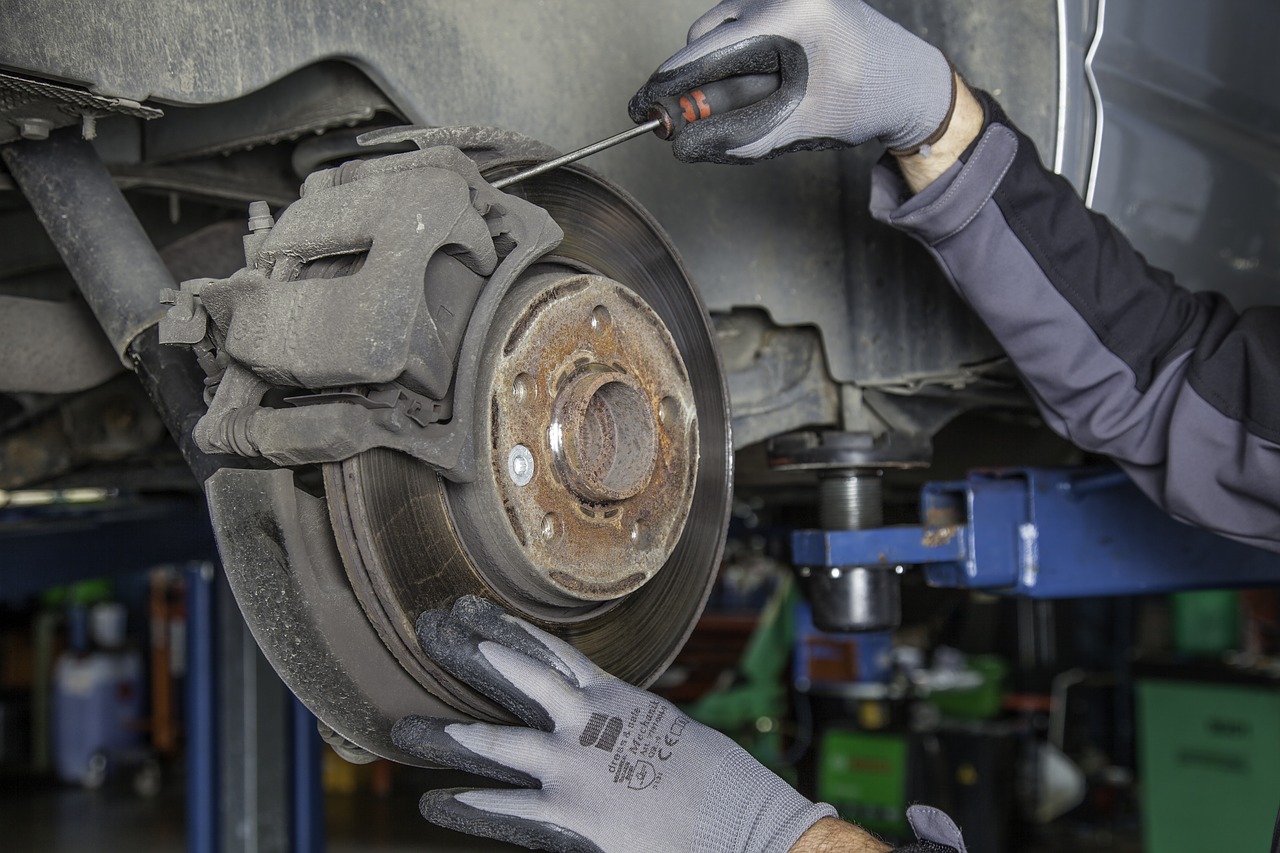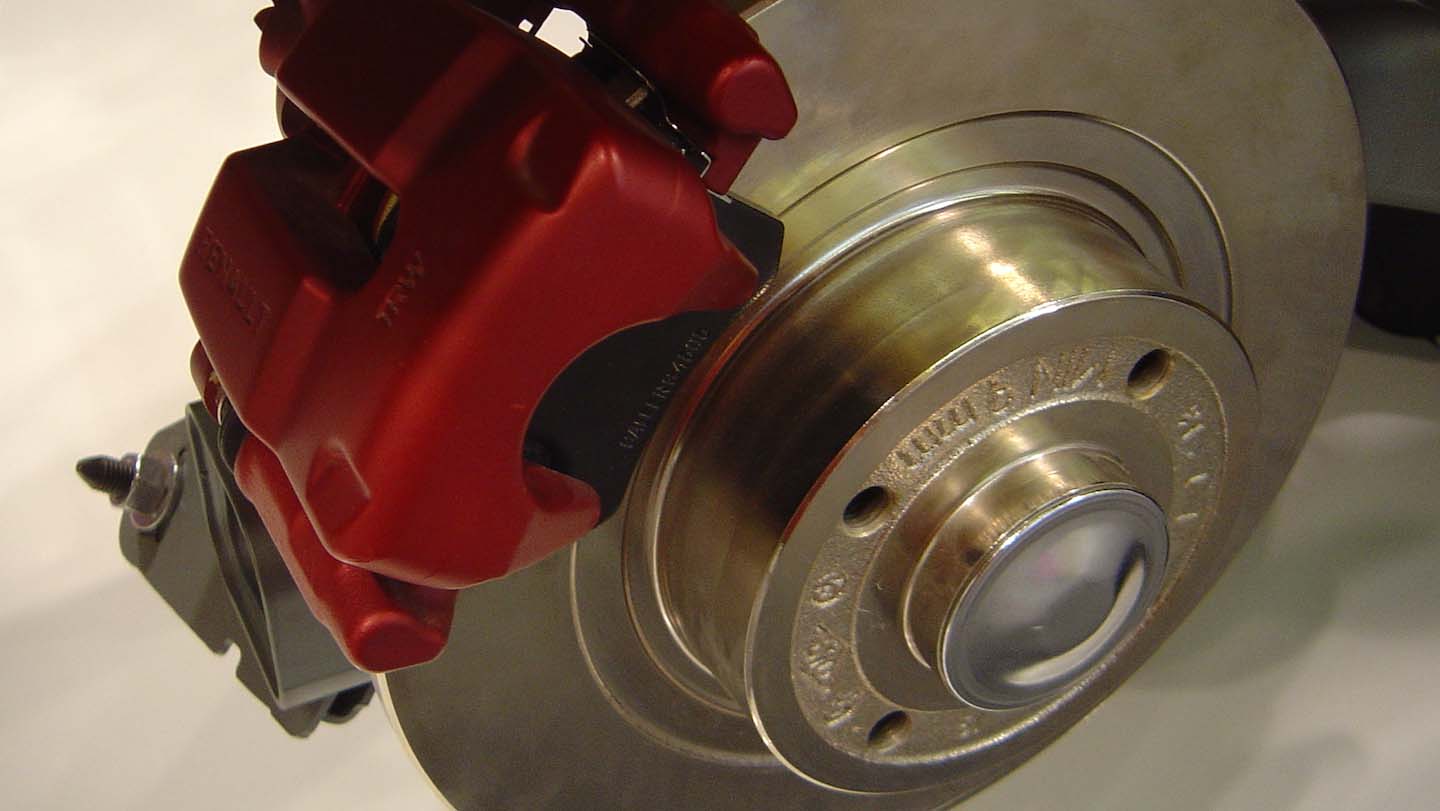
Source | David Monniaux
There are two types of front-disc brake-conversion kits: Those that require you to change the spindle and those that don't. Changing the spindle is a job in of itself, so this project will cover the steps required for installing a kit that doesn't require changing the front spindles.
The exact procedure to complete this upgrade will depend on what car you have (Camaro, Firebird, Charger, Challenger, Mustang, Comet, etc.) and its year of manufacture. The basic procedure for any car that came from the factory with front drum brakes without replacing the front spindles is as follows.
This is a project that needs some know-how
-
Park the car on a flat and level surface like that of your garage. Block the rear wheels and loosen the front lug nuts a turn or two with the lug wrench. Place the jack under the center crossmember and raise the front wheels off the ground.
-
Place the jack stands under the frame on both sides of the car behind the front wheels and carefully lower the car onto the stands. Remove the lug nuts and the front wheels.
-
Remove the dust cover from one of the front hubs and set it aside. Remove the cotter pin with the pliers. Remove the castellated nut cover (the thing that looks like a giant bottle cap). Using the appropriate pliers or wrench, remove the hub-bearing nut. Place these items in the dust cover so as not to lose them.
-
Grasp the inner ridge of the brake drum and pull toward you firmly. You may need to pull quite forcefully (especially on an older vehicle that hasn't been driven for some time) or even hit the drum around its circumference with a hammer a few times to get it loose enough to remove. This exposes the inner workings of the front drum brakes.
-
Using an aerosol brake cleaner, thoroughly clean the spindles and knuckle/steering arm, paying close attention to bearing surfaces for nicks and scratches. If nicks and scratches are found on the bearing surfaces, the spindle(s) will have to be replaced.
-
Mount and torque the caliper adapter bracket as outlined in the kit. Some kits will have you remove the upper ball joint bolt and a bolt from the steering arm while others will have you remove other bolts. Most GM F-body kits will mount this adapter to the upper ball joint retainer and the steering arm bolt.
-
Pack the new bearings and install them and the seals in the new hubs. You can either use a bearing packer or you can pack the bearings by hand by pushing the side of the bearing into a puddle or pool of grease in the palm of your hand until the grease comes out the opposite side. If packing the bearings by hand, be thorough and make sure that all the dirty, worn grease is purged from the bearings. Also, make certain you're using the right type of high-temperature grease for the job.
-
Set the new bearings into the new hub and install the grease seal. The larger bearing goes into the rear of the hub assembly, tapered side down. The seal is them installed with several sharp raps of a hammer, open side down. Be sure the seal is seated evenly—you might try putting a block of wood over the seal, then striking it with the hammer to drive it in evenly.
-
Assemble the rotor to the adapter and then to the hub assembly. Hold the rotor and adapter plate against the rear (inside) of the new hub assembly and attach the rotor to the adapter and the adapter to the hub with the included bolts. A dab of Threadlocker Blue or Green ensures that these bolts don't loosen due to vibration. Be sure to torque these bolts as specified.
-
Slide the assembled hub and rotor assembly onto the spindle and check for clearance between the rotor and the caliper mount installed above. Shim the caliper mount as needed so that the rotor and caliper mount are parallel.
-
Secure the hub assembly to the spindle by sliding the packed smaller bearing onto the spindle, followed by the keyed thrust washer removed above. Tighten the nut so there is no play in the bearing. Slide the locking cap over the spindle nut and lock in place with the new cotter pin.
-
Install the dust cap. The dust cap on some disc brake conversions will be screwed into the hub assembly, while others are installed simply by tapping the dust cap into place with a hammer.
-
Install the new calipers on the mounts with the supplied hardware. You may or may not need to use the included shims to get the caliper to align properly with the rotor. Using Red Threadlocker, torque the caliper bolts to the specified torque. Make sure the bleeder screw faces up.
-
Remove the stock master cylinder by removing the two brake lines and the two bolts mounting the master cylinder to the firewall or brake booster. Be careful not to spill brake fluid, as it will destroy paint almost instantly.
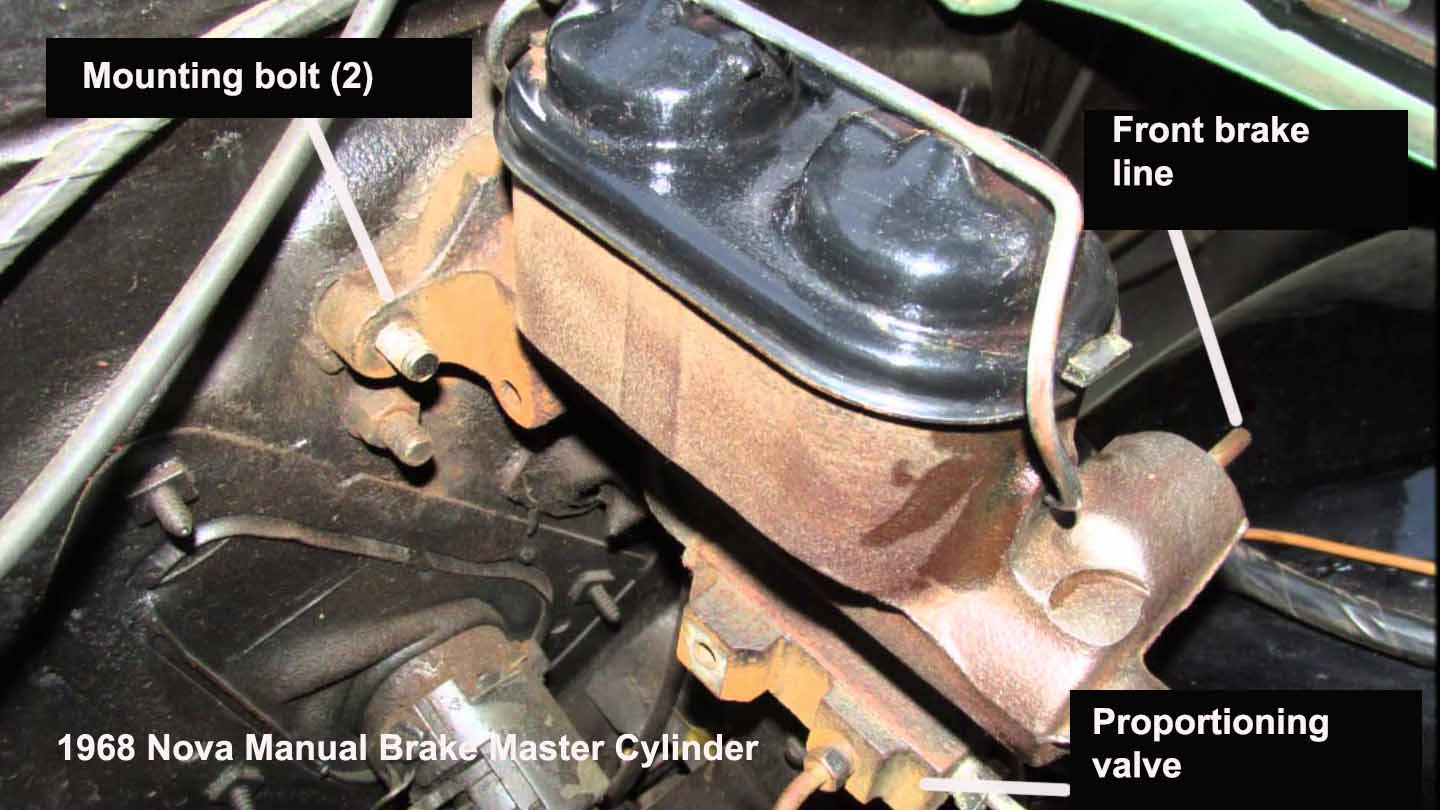
-
Fill and bleed the new master cylinder. Bleeding the new master cylinder can be done on a bench or on the car. Install the master to the booster or firewall with the original nuts/bolts and tighten accordingly.
-
Attach the two bleeder tubes that came with the new unit and fill both reservoirs with brake fluid. Have someone slowly press the brake pedal while watching until no more bubbles come out of the tubes. Make sure you keep the reservoir full.
-
Attach the brake lines to the master cylinder. We recommend using flare wrenches so as to not damage the fittings on the brake lines.
-
Install new rubber brake lines to the new calipers and bleed the system. Once the new hoses are attached, have someone pump the brake pedal a few times and hold it while you slowly loosen the bleeder screw on the passenger side rear wheel, with tubing running into a jar with clean brake fluid in it. Repeat the process on the driver side and then move to the front, passenger side first. Make sure you keep the master cylinder full.
-
Install and torque the wheels. Slide the wheels over the wheel studs and run down the lug nuts as much as possible by hand. Move the jack under the center support and raise the car off the jack stands. Remove the jack stands and carefully lower the car until the wheels contact the ground. Properly tighten the lug nuts with the lug wrench and finish lowering the car.
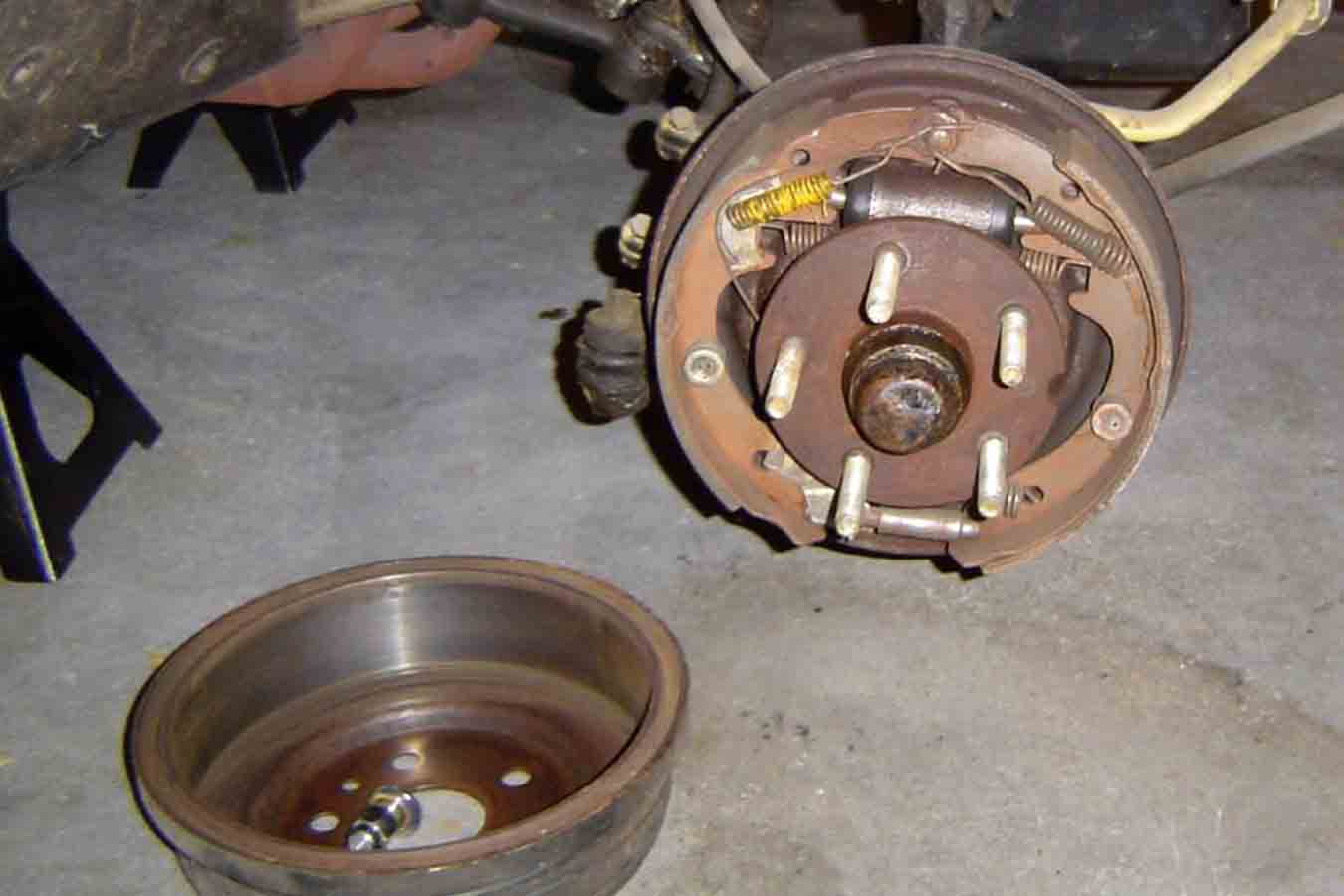
Source | Ryan Frost/Flickr
Loosening the brake line inlet at the back of the wheel where it connects with the wheel cylinder or where that line connects to the steel hard line can help in releasing pressure against the brake drums from the shoes. Remove the four bolts securing the backing plate to the steering knuckle/spindle assembly.
Some kits will have you install the wheel studs yourself while others will have the studs pre-installed for you. Additionally, some of the kits that require you to install the new wheel studs and have an installation process that is as easy as threading the studs into place and torquing them down while the wheel studs must be pressed in with other kits. If this is the case with yours, you may have to have that performed at a machine shop.
Master cylinders for drum and disc brakes are different. A master cylinder for disc brakes must take some of the fluid in the lines back when the brake pedal is released. This allows the caliper pistons to retract and allows brake pads to “float" off the rotors when the brakes are not applied. Without this feature, disc brakes would drag.
If the brake lines and diverter valve on the car are working properly, you will now have the safety and ease of use of disc brakes on your classic car.
